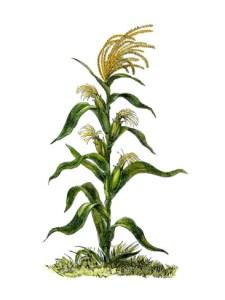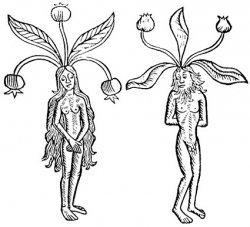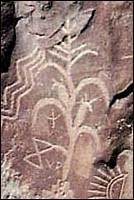by Russ McSpadden

But it’d be a stretch to imagine altruism in the plant kingdom, wouldn’t it?
Well, turns out, Pamela Diggle, professor of plant evolution at the University of Colorado, thinks corn plants exhibit altruistic behaviors as well, at least towards their siblings. This means that even for flora, blood—or chlorophyll rather—is thicker than water.
Wait, this sounds crazy. How did she come to that conclusion?
I hoped you wouldn’t go there.
OK, I’m going to try to break this case down in a way that isn’t too complicated and yet still makes sense (though its really f*cking complicated) and do so with the obvious caveat that I do not really understand evolutionary biology. You can always go to the source here for a more detailed analysis.
Fertilized corn seed has two “offspring”. Offspring one is the embryo. Offspring two is the endosperm, which is the self sacrificing source of nutrition used by the growing embryo. If the embryo doesn’t fully absorb the endosperm during the reproduction process, it becomes the fruit or some other part of the plant and lives out its life that way.

According to research conducted by Professor Diggle, endosperm is far less likely to sacrifice its own existence to provide nutrients to embryos it is not fully related to.
“The results indicated embryos with the same mother and father as the endosperm in their seed weighed significantly more than embryos with the same mother but a different father” Diggle said. “We found that endosperm that does not share the same father as the embryo does not hand over as much food — it appears to be acting less cooperatively. Our study is the first to specifically test the idea of cooperation among siblings in plants.”
And while this may seem to call into question the endosperm’s attitude to half-siblings, that would be a real cynical ass way to look at it. I mean goddamned! There appears to be familial love growing in that corn plant, and pardon the anthropogenic trappings I may happily be falling into here but this makes me a little happier to be alive.
If nothing at all this study shows that endosperm don’t just give up their life for nothing —hell no. They choose to die because that death will nourish the life of a sibling. They won’t sacrifice it all for just any old embryo.
According to William Freidman, professor of organismic and evolutionary biology at Harvard, this is one of the key factors in altruism:
“One of the most fundamental laws of nature is that if you are going to be an altruist, give it up to your closest relatives,” said Friedman. “Altruism only evolves if the benefactor is a close relative of the beneficiary. When the endosperm gives all of its food to the embryo and then dies, it doesn’t get more altruistic than that.”

Petroglyph of maize plant
And I’d just like to say, you’ll hear a great deal of jabbering in your life about survival of the fittest, about how evolution favors the selfish and the most aggressive, but please never underestimate the role of sacrifice and love and kinship. Reciprocity and cooperation appears to be the building block of a successful long term existence plan for many species. The maize plant, considered sacred in many cultures, has been so successful, in part, because of generations of altruistic endosperm. Keep that in mind.

